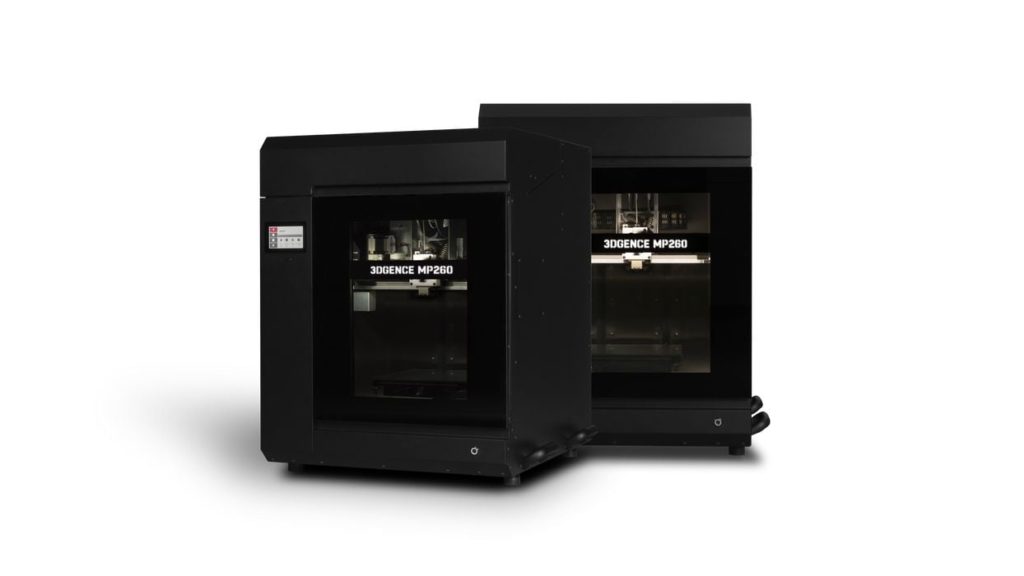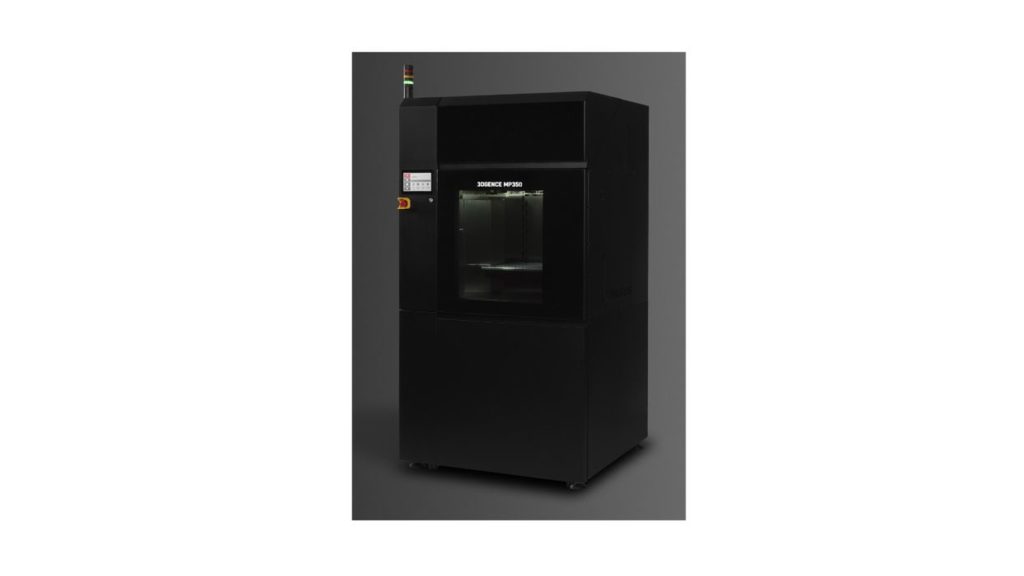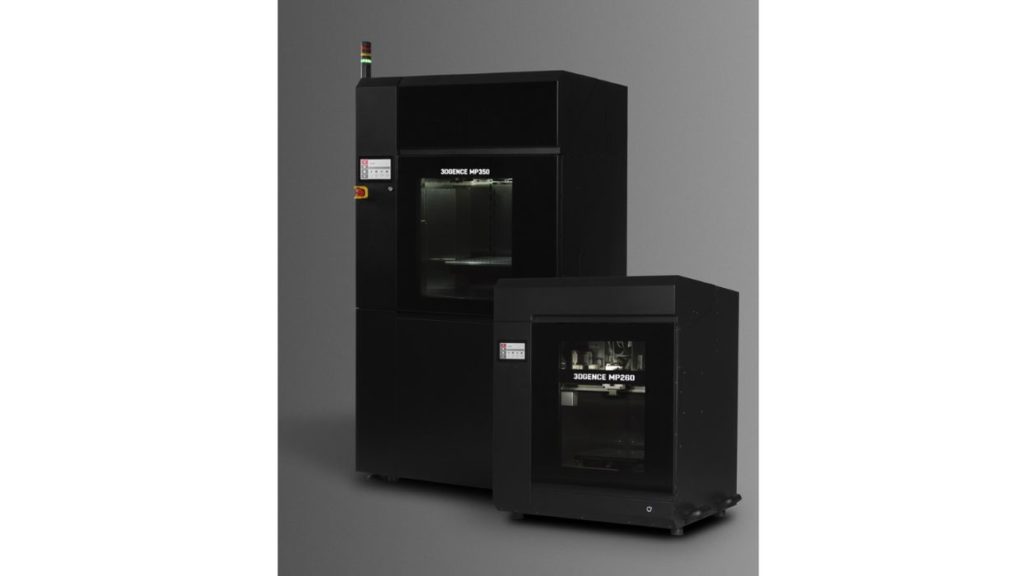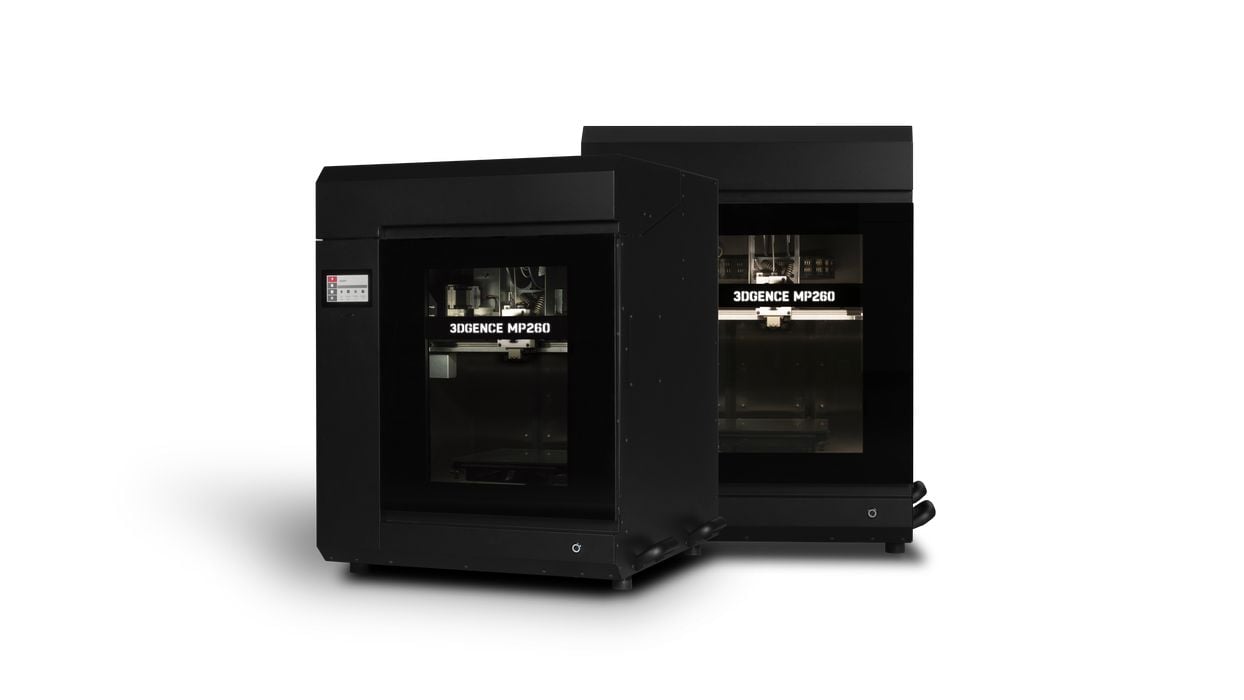
3DGence announced the “ELEMENT” series of metal 3D printers to accompany their INDUSTRY thermoplastic series.
The Polish company has produced industrial-level thermoplastic 3D printers for several years, now boasting four models. Now they are significantly broadening their reach with a new line of metal 3D printers.
The ELEMENT series uses a FFF process, and when I first heard of this development, I assumed they were simply using BASF’s metal filaments, as several other 3D printer manufacturers have recently announced. In almost all of those cases, an existing machine has had minor (or no) tweaks to enable printing of specialty metal filaments. But that’s not the case with the ELEMENT series, which seems to be an entirely new device.
ELEMENT does use a multi-step process, where parts printed must be sintered to finalize their metal form, as is the case with other FFF-based metal 3D printing processes.
3DGence is targeting MIM production companies (MIM stands for Metal Injection Molding, a common method of producing volumes of metal parts) with two models: the MP260 and MP350.
The MP260 is the smaller of the two machines, although we don’t yet know the build volume or other specifications: 3DGence said they will announce them later, so it appears they are still finalizing the machine.

The MP350 is described as a larger machine, but is bundled with a debinder and sintering station, making it a fully usable end-to-end system upon delivery.
What’s interesting about this announcement is the materials. 3DGence said the MP260 will “process two key materials, including 316L Stainless Steel”. We don’t know what the other material might be.
But then they said this:
“The MP260X version will also be offered at time of launch, and will work with most sinterable filament materials utilized in current MIM technology.”
Hold on, there are THOUSANDS of MIM materials available in the industry. Does this mean the MP260X is able to 3D print in many of those materials? That could be a massive materials advantage over other efficient metal 3D printing options. Even better, MIM materials are commodity priced due to their widespread availability, thus making the consumables cost low on the MP260X.
How did 3DGence develop a machine capable of processing standard MIM materials? They explain:
“The printer is equipped with an enhanced extrusion system, advanced hardened nozzle with material detection system, and a specifically designed material bay.”
3DGence CTO Krzysztof Wilk explained further:
“We based our technological solution on the experience of our MIM partners. First, the printers must be reliable and easy to use. Feedstock materials are generally brittle and hard to handle with standard extrusion systems. We developed and tested many different designs before we finalized a reliable and stable extrusion system.”
Ok, that sounds interesting, but I’d like to understand more about this. If this was easy, then EVERY 3D printer would be able to 3D print MIM materials.
Apparently the MP350 supports an even “wider range of materials”.

3DGence said the new MP260 (and presumably MP260X) will launch in December, with the MP350 following on early in 2022.
This is a very intriguing announcement, because it provides an incredibly easy path for metal workshops to immediately dive into additive manufacturing. The same types of materials are used, except in 3D printers.
This means a workshop can more quickly respond to client demands by printing lower volumes of parts immediately, rather than waiting for the costly production of an injection mold. In some cases they may find the costs for per-unit production are lower, leading to either added profits or less cost for the customers.
3DGence can also take advantage of their current customer base: clients using thermoplastic equipment will, in many cases, also be interested in metal options. This could make sales of the new ELEMENT series much easier for the company.
I have a suspicion 3DGence will sell a great deal of these machines.
Via 3DGence

